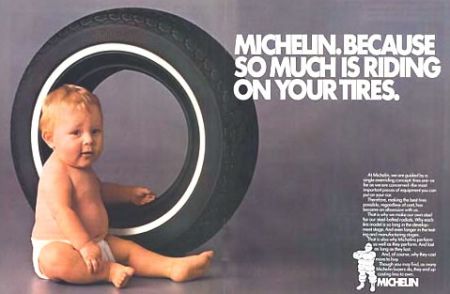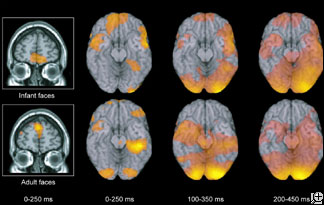Baby Pictures Really Do Grab Our Attention

Since the early days of advertising, it’s been axiomatic that pictures of babies grab the attention of readers more effectively than any other kind of image. This has led to baby pictures being used in ads for just about any kind of product or service, often with a cute caption to tie in the image to the unrelated ad content. As it turns out, decades of advertisers were right on the money: our brains are hardwired to respond to baby faces, and even baby-like characteristics in adults.
The urge to cuddle and coo when presented with a baby turns out to be an innate response prompted, at least in part, by the structure of an infant’s face, according to new research that actually shows how this baby love process works in adult brains. The finding could explain many behaviors, including why adults connect with babies, why most parents immediately gravitate to their kids and why many men appear to be attracted to women with baby-like features.
All elicit an attraction and parental brain response beginning in the medial orbitofrontal cortex, which is at the front of the brain just over our eyeballs, the new study, published in this week’s PLoS ONE, determined.
“The brain activity in the orbitofrontal cortex could help us pay more attention, protect and cuddle the infant,” lead author Morten Kringelbach told Discovery News.
Kringelbach, a senior research fellow in the University of Oxford’s Department of Psychiatry, and his colleagues compiled a database of infant photos pulled from digital videotapes of 27 infants who were filmed in their own homes. Ninety-five male and female adults rated the emotional expressions of the babies from “very negative” to “very positive” affects.
A neuroimaging technique called magnetoencephalography, which provides resolution of whole brain activity up to the millisecond at millimeter-level detail, was then used to monitor the brains of 12 of the adult participants. The dozen individuals focused on the changing color of a red cross on a computer screen while adult and infant faces flashed before them at 300 milliseconds apiece. [From Discovery News – Adult Brains Wired to Go Ga-Ga Over Babies by Jennifer Viegas.]
The researchers found that all face images caused brain activity, but adult images lit up the back of the brain while baby pictures lit up an area in the front of the brain associated with emotions.

This is a prime example of how neuromarketing research (although these researchers weren’t focused on marketing) will often serve to confirm what marketers have known either intuitively or through traditional research techniques. It’s interesting that this study used MEG scanning equipment, a technology that hasn’t gotten much public neuromarketing attention to date. Adding a baby image inevitably adds an emotional advertising component, even when the content itself is more rational.
An intriguing aspect of the research is that the “baby programming” in our brains also affects how we perceive adult faces.
Prior research has even found that “men prefer female faces with baby-like features,” said Kringelbach. “The data is more complex for women who, depending on their ovulation, tend to prefer either very masculine or baby-like faces.”
Coming Soon: Cuddly Puppies
A further piece of good news for marketers is that Kringelbach’s next research project involves more staples of the “grab the reader’s attention at any cost” school of marketing: puppies and kittens! 🙂
